フィールド日記
2024年04月
2024.04.30
キンラン
キンランが咲いています。野生ランの一種で、よく手入れのされた雑木林などに生えています。生育場所の減少や園芸目的の採取によって数を減らしており、全国で絶滅危惧種に指定されています。
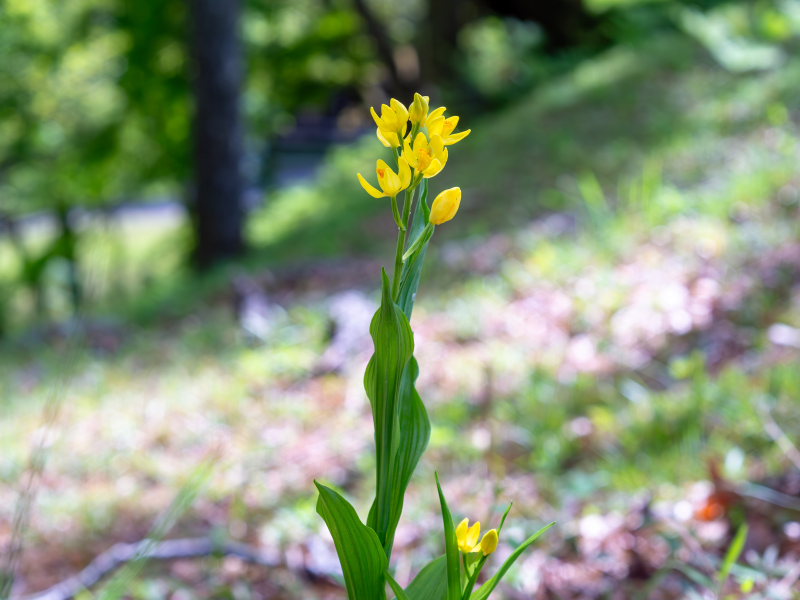
2024.04.26
ウマノアシガタ
ウマノアシガタが咲いています。キンポウゲ科の多年草です。本来は八重咲きのものをキンポウゲと呼んでいましたが、現在では本種の別名をキンポウゲとしているようです。花弁には光沢があり、クヌギ林の木漏れ日でキラキラと光って見えます。
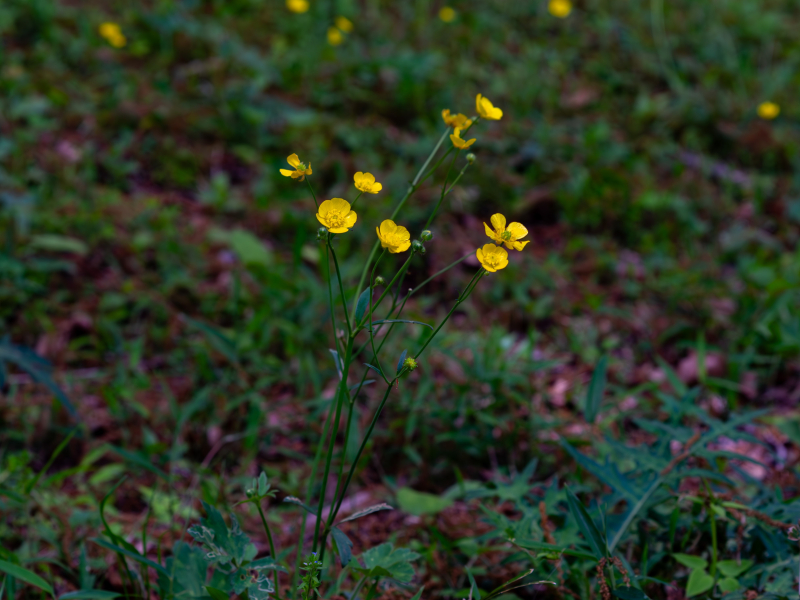
"Umano-Ashigata (ウマノアシガタ)" plants are in bloom. They are perennial plants that belong to the "Kinpouge (キンポウゲ)" family. The double‐flowered ones were originally called "Kinpouge," but now, "Kinpouge" is used as an alias of this species. Their petals are reflective, so they are shiny under the sunlight coming through the leaves in the Japanese chestnut oak woodland.
2024.04.23
ナベワリ
ナベワリが咲いています。樹林内に生える多年草で、不二聖心ではヒノキ林の林床にまれに見られます。有毒植物で、舐めると舌が割れるほどの刺激があり、「舐め割り」がなまってナベワリとなったという説があります。
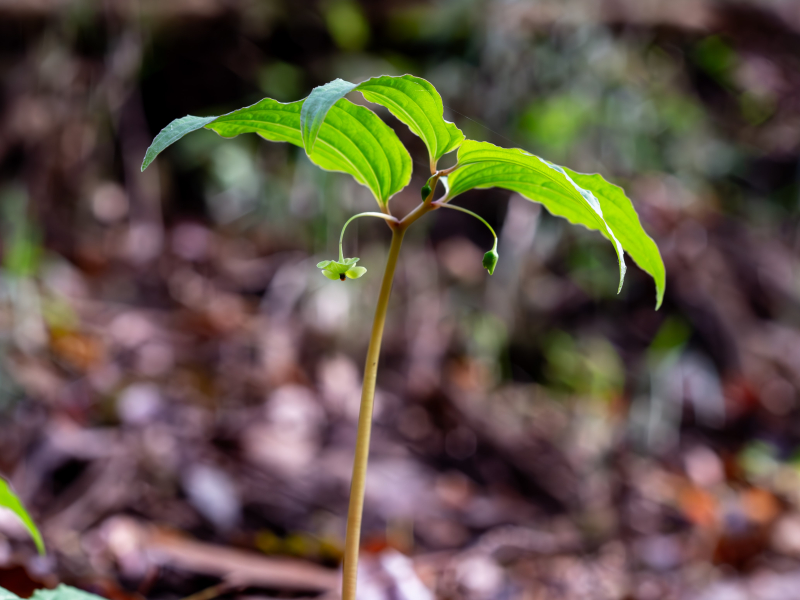
2024.04.19
イロハモミジ
イロハモミジが咲いています。キャンパス内には、不二聖心の前身である温情舎小学校の創立者 岩下清周が京都から取り寄せたと言われるイロハモミジの木がたくさんあり、秋には美しい紅葉を楽しむことができます。春には写真のような暗紅色の小さい花をつけます。
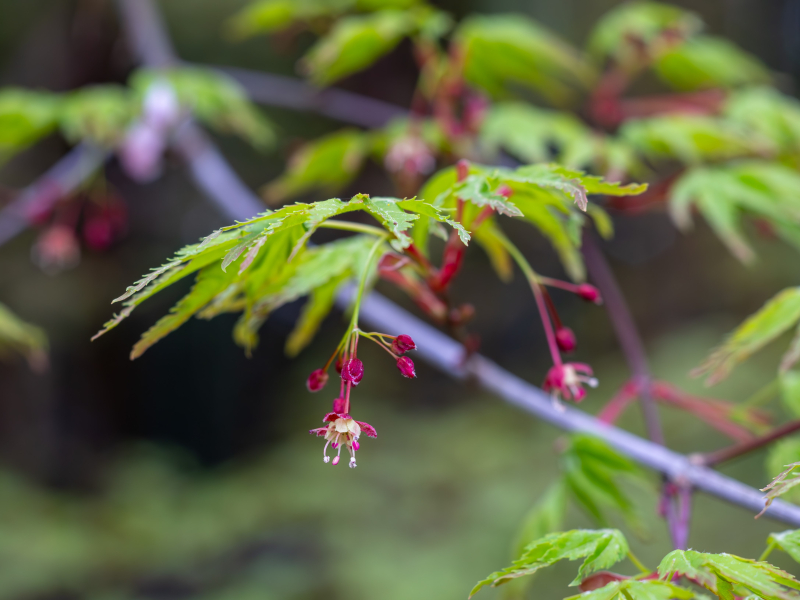
2024.04.16
ウラシマソウ
ウラシマソウが咲いています。花は仏炎苞と呼ばれる苞葉に包まれています。花には付属体と呼ばれるものがあり、その先端は糸状に伸びて地面まで達しています。和名は、この伸びた付属体の先端を浦島太郎の釣り竿に見立てたことによります。
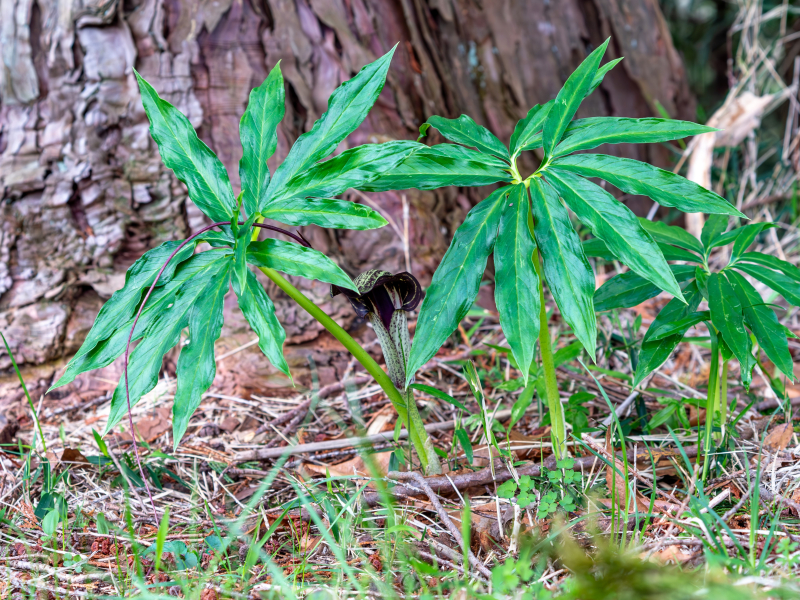
"Urashima-Sou (ウラシマソウ)" plants are in bloom. Flowers are covered with a bract leaf that is called "Butsuen-Hou (仏炎苞)". The flowers have an appendage. The tip of their appendages grow like strings and reach to the ground. The name comes from the fact that the tip of the appendage reminds us of the fishing rod of Urashima Taro, who is the main character of a Japanese folk tale.
2024.04.12
シュンラン
シュンランが咲いています。林床に生える野生のランの一種です。花を食用とするなど身近な蘭ですが、近年は人為的な採集などによって数を減らしています。不二聖心ではシカに食べられているようで、開花している個体は少ないです。
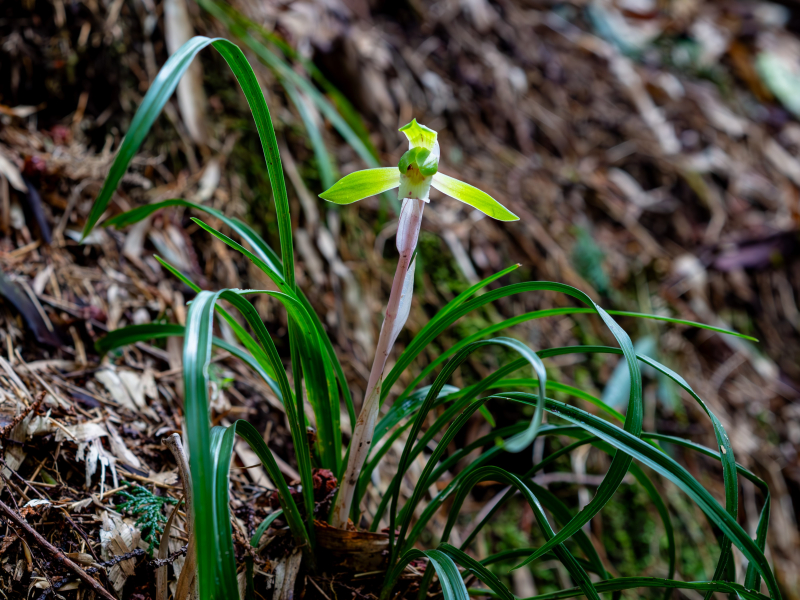
2024.04.09
ミツバアケビ
ミツバアケビが咲いています。和名は、1枚の葉が3個の小葉からなる3出複葉のアケビであることに由来します。果実は秋に熟し、果肉は甘く食用になります。また、地域によっては果実の皮の部分も食用とするようです。
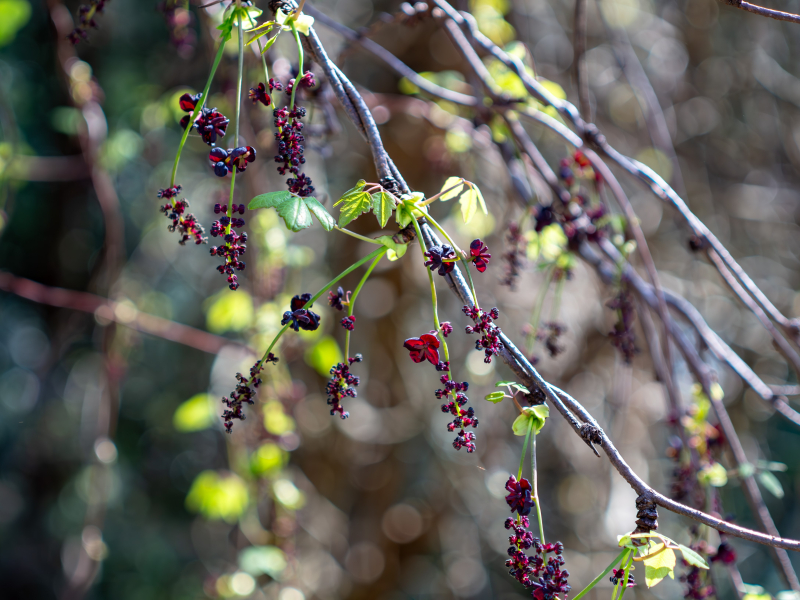
"Mitsuba-Akebi (ミツバアケビ)" trees are in bloom. The name comes from the fact that their leaf consists of three leaflets and that they belong to the "Akebi (アケビ)" group. Their fruits ripen in fall and the flesh of them are sweet and edible. People in some regions eat the peels of the fruits.
2024.04.05
アオキ
アオキが咲いています。樹林内によく見られる常緑低木です。和名は冬でも葉や茎が青々としていることに由来します。シカの食害を受けやすいらしく、不二聖心ではあまり多くありません。
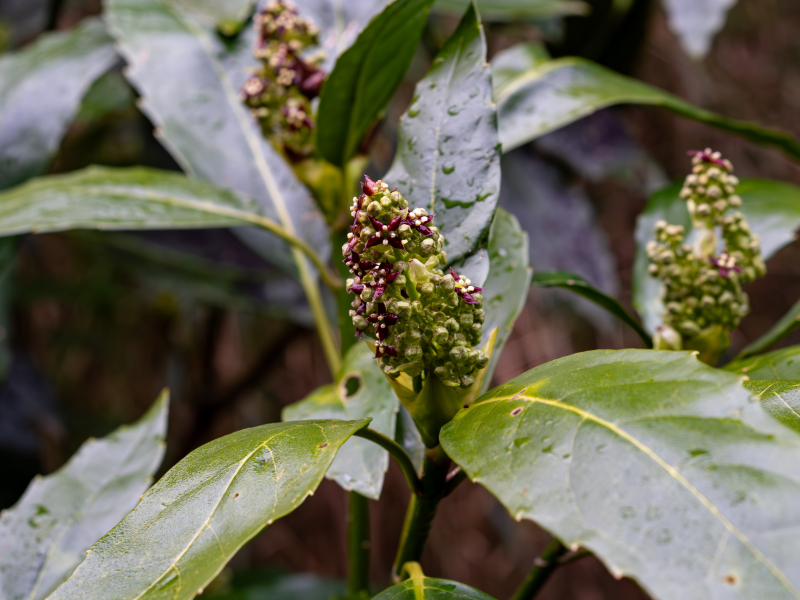
2024.04.02
フサザクラ
フサザクラが咲いています。渓流沿いに多い落葉樹です。花は葉に先立って咲き、多数の暗紫色の雄しべが目立ちます。和名は、この花の咲く様子を桜に見立てたものと考えられます。花びらやがくはなく、原始的な植物の一種といわれています。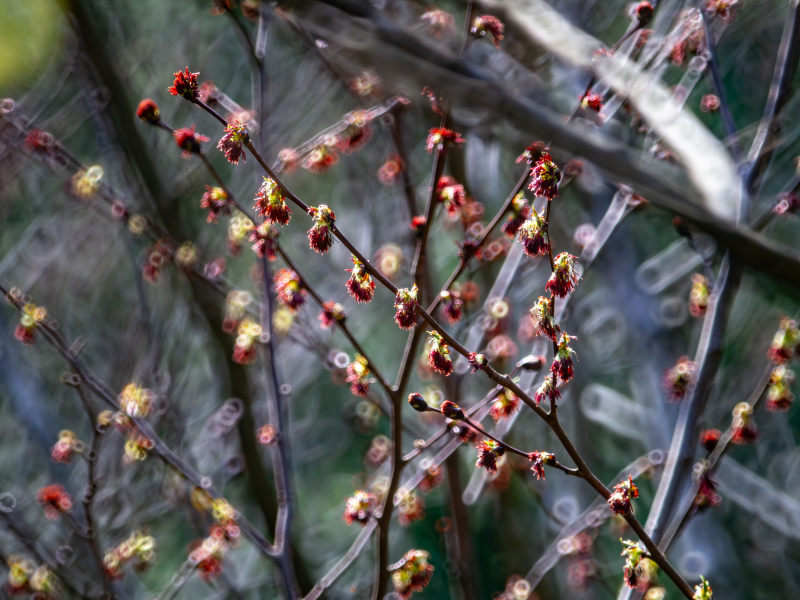
"Fusa-Zakura (フサザクラ)" trees are in bloom. They are deciduous trees that often grow along mountain streams. They bloom before spreading their leaves and their dark red stamens are outstanding. The name comes from the fact that their way of blooming seems to be that of cherry blossoms. They are considered as a primitive species because their flowers don't have their petals or sepals.
- 1 / 1

















